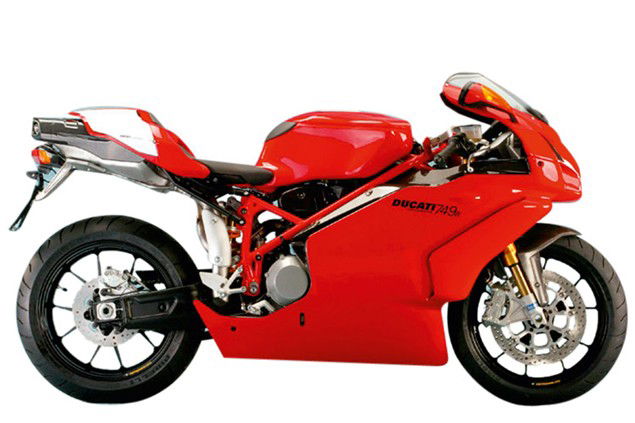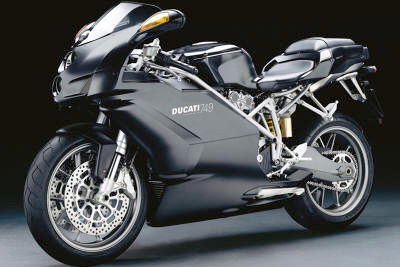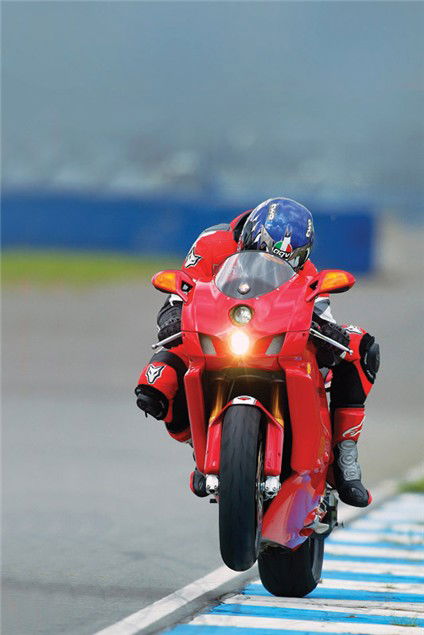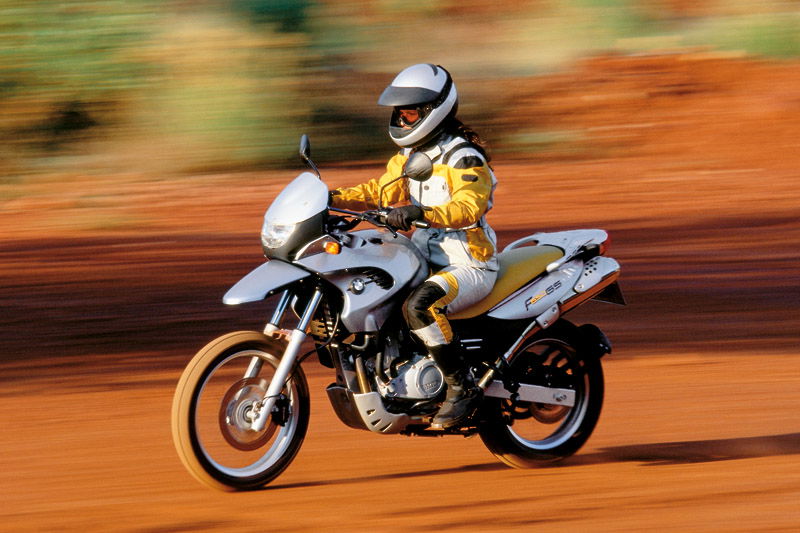Buyer Guide: Ducati 999 & 749
Everything you need to know about running the Ducati 749 and 999 from actual owners

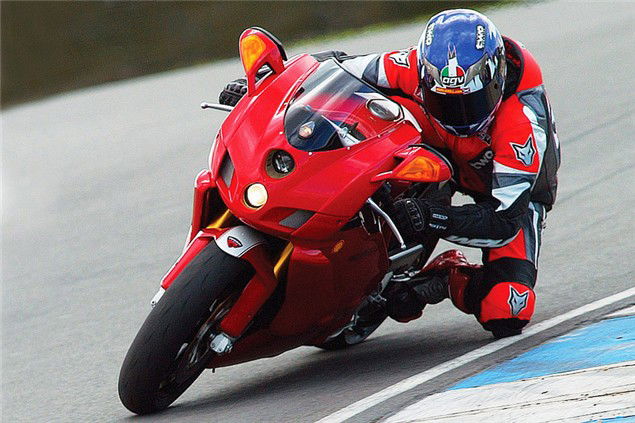
Click to view: Ducati 999 & 749 owners reviews, specs and image galleries.
Sometimes the big boys do get it wrong. There’s no shortage of folk who’d claim the 749 and 999 family of Ducatis never had the visual appeal of the instantly iconic 916/748 family these bikes replaced.
A few tweaks, some subtly different paint and the passage of time has changed quite a few opinions on the 749 and 999’s looks. The controversial design was penned by Italian/South African Pierre Terblanche. While it’s not the obvious wasp-waisted, high cheek-boned supermodel the 916 was, it’s still a visually stunning bike and from certain angles it looks very fresh, especially the subtly updated 2005-on bikes. It remains a machine that splits opinion, and that helps keep prices low on the used market – especially as the more beautiful 848 and 1098 family has now replaced it in Ducati’s line-up. There are bargains to be had.
Looks aside, the 749 and 999 are sublime sportsbikes. Dynamically they’re a significant leap ahead of the models that preceded them. They make a lot more power and they handle even better, which is, after all, what race-reps are all about. The 999 is the most successfully raced Ducati ever. Forget the image and remember these are some of the most capable sportsbikes money can buy.
Sixty-nine owners filled in our online survey this month. Of those, six have the 749 Dark, 11 have the 749, 17 the 749S, five the 749R, 15 the 999, 14 the 999S and just one lucky guy has the 999R. They’ve covered about half a million miles on these machines in total so forget your prejudices and believe everything you read here.
Owner Case Study: "I’ve had two – one bad, one good."
Alan Edwards has had Ducatis for 20 years. His first 999, bought new in 2004, was the worst of the lot
"It had a problem which meant it kept cutting out when I went to overtake. In the end it was sorted by Woods of Abergele. They had it for about 12 weeks but they gave me a courtesy bike during that time and I thought they were great. In the end they swopped the tank with one from another bike and that cured the problem. They then stripped my tank down and found debris or sand in there which went backwards under acceleration and blocked the fuel pump intake. I’ve since heard a few other bikes have suffered the same problem too. After that was fixed it had some electrical problems and with 6000 miles on the clock, I persuaded Ducati UK to take it back and do me a deal on a new 999S. I’ve done 19,000 miles on that and it’s been fantastic. It’s beautiful to ride, you really feel at one with it. I’m about 5’11” and I find it perfectly comfortable over a four-day tour of Scotland. I adjusted the footpeg position and the bars slightly which helped. I can’t praise it enough, and I know I’ll never be able to use all its ability on the road.
"I haven’t been put off Ducatis by the first 999 at all, though there’s nothing in their range at the moment that really rocks my boat. I've got a KTM 990 Adventure as well as the 999S in my garage and for me that’s all the bikes I’ll ever need."
Ducati 999 & 749 Buyer Guide

Reliability
Often a question mark with Ducatis. But our survey suggests that’s not necessarily fair. We asked “How reliable has your bike been?” Over half said their bike had been 100% reliable. 33% reported one minor problem, 15% reported having had a few problems and just 1% said they’d had “loads of problems”.
As for the specific problems, the common ones seem to be pretty minor. Relays cause grief. Four owners had the one for the fuel pump fail and three had the headlight one go. But both are only a few quid to replace. The finger from a latex glove helps keep the headlight relay dry and working. Five owners complain of poor idling or stalling and others say it’s a well-known issue. Three owners have had coils fail – again a known problem as the front one gets spray from the front wheel. Later coil packs are said to be more resistant. Two owners had fork seals go prematurely on Öhlins-equipped bikes (another common complaint).
Two complained of the sidestand bracket failing, which can cause the bike to fall over. Two had issues with the rear light due to wires rubbing though in the tube under the exhaust we think. The only owner who said his bike had loads of problems (a 2005 999) listed them: “Engine rebuild at 1200 miles due to main bearing failure, subframe cracked at 1000 miles, sidestand broke, starter clutch, fuel relay, batteries, wiring harness burnt, ECU, rear brake seal failure, metal swarf found in sump.” He’s thinking of changing it but every time he rides it, he wants to keep it. The power of love.
Other owners listed more issues but they were all one-offs. Overall that sounds like quite a few faults but it seems the 749 and 999 are pretty reliable. Okay, they’re not as bulletproof as say a Honda Blackbird, but they’re much better than earlier Ducatis.
Finish is above average, though the headlight surround, rear shock and the engine cases all come under fire for flaking paint. The bottoms of the fork legs can corrode, as can fasteners, and there’s the odd grumble about the frame and swingarm paint and the finish around the hydraulic reservoirs.
Sound buying advice is to check for a full service history from a competent mechanic, make sure the clutch isn’t slipping, ensure the red master key is present and make sure the oil cooler doesn’t leak. There’s loads more useful advice about running these bikes on websites like www.ducati-upnorth.com, www.ducatisti.co.uk and www.ducatisportingclub.com – all packed with Duke-related goodness.
Running costs
These are premium bikes and they need proper servicing. All models are due for a smaller service every 6000 miles or 12 months and a major one every 12,000 miles or 24 months.
Official prices make for scary reading. Ducati have mandatory and discretional work at each service. The 999, 749 and 749S are £443 mandatory plus up to £277 discretional for the 6000-mile service and £690 plus up to £441 for the 12,000 mile. The 999S is slightly more expensive, as is the year 2004 749S. Both R models are big bucks to keep sweet – around £750 plus up to £250 for the minor and £1000 plus up to £450 for the major.
Fortunately prices paid in the real world are lower than those. 749S owners shelled out an average of £353 for the minor and £573 for the major, while those with the 999S paid less at £307 and £546 respectively. For the 749R it was £363 and £663, while the only 999R owner paid £500 and £900 for minor and major.
Using independent dealers can bring the cost down to as little as £200 for the minor but, at the other end of the scale, some owners paid around £800 for the major service at main dealers. Clearly these aren’t bikes to run on a shoestring. Ignore services on a Ducati and you’re inviting mechanical catastrophe. Quite a few owners say they think regular use is kinder to the engine than long periods sat unused in the shed.
Fuel consumption’s not an issue for many owners but average figures are 37mpg for the 749S and 36mpg for the 999S. Anything between 20mpg and 50mpg is possible, depending on how the bikes are ridden.
Tyres and pads
Owners in the survey fitted a very broad range of tyres. Most are fast road / track day rubber although three have fitted sports touring tyres (Michelin Pilot Road and Avon Storms) and say they’re perfect on the road. With such tyres you can expect quicker warm-up, better wet grip and longer tyre life.
Top tyres are Pilot Powers, with 23% of our vote – an excellent current sporty tyre. Diablo Corsa IIIs (with 15% of the vote) are similar but slightly racier. Pilot Sports are a bit more road-biased than the Pilot Powers and the regular Diablos are similar to the Pilot Sports in that respect. The Pilot Sport and Pirelli Diablo shared 10% of the vote.
They’re all good tyres, though the Pilot Sport has been in Michelin’s range for ten years now so should be the cheapest of these four. John Berbuto runs a 180 rear on his 999 rather than a 190 and says it’s an improvement.
Brakes are important on such a capable machine. 57% of owners use OE pads, which are Brembos, and none have any complaints about them. Next most popular are EBC with 24% but a quarter of those say they’re not good for one reason or another. Third most popular are Performace Friction with 8% using them – but almost everyone raved about how good they are.
Owner Case Study: "I think the 749 is better than the 999"
Davie Weir has a 2002 749S which he’s owned for five years and taken the mileage from 7,000 to 24,000
“I had a ride on a 999 and to be honest I prefer the 749. The 999 is a bit lazy – you can rely on the torque and the power. You have to work the 749’s gearbox more. I think they’re a beautiful bike to ride and you’d struggle to find anything better.
“When I bought it I was considering the 748 as well. At first I wasn’t sure about the shape of the 749 but I like it.
“I haven’t had any problems at all with mine. 1970s and 1980s Ducatis were unreliable but modern ones are fine. One of the bolts that holds the headlight assembly has sheared off – I think they’re a bit soft.
“It can stall in cold, damp weather when you’re coming to a halt. I was speaking to the guys at Ducati Glasgow and they reckon it’s because it’s set up to run perfectly at workshop conditions – about 20 degrees and dry, so when it gets cold and damp the fuelling’s not perfect.
“I was using Michelin Pilot Power tyres but the rear had squared off by about 2500 miles. I’ve switched to Pilot Road 2s and I think I’ll get more than twice that from a rear and they grip perfectly well for road riding too.
“I’m lucky – there’s a factory-trained Ducati technician about 100 yards up the road from me so he services it. If I took it to the main dealer they’d probably charge twice as much.”

